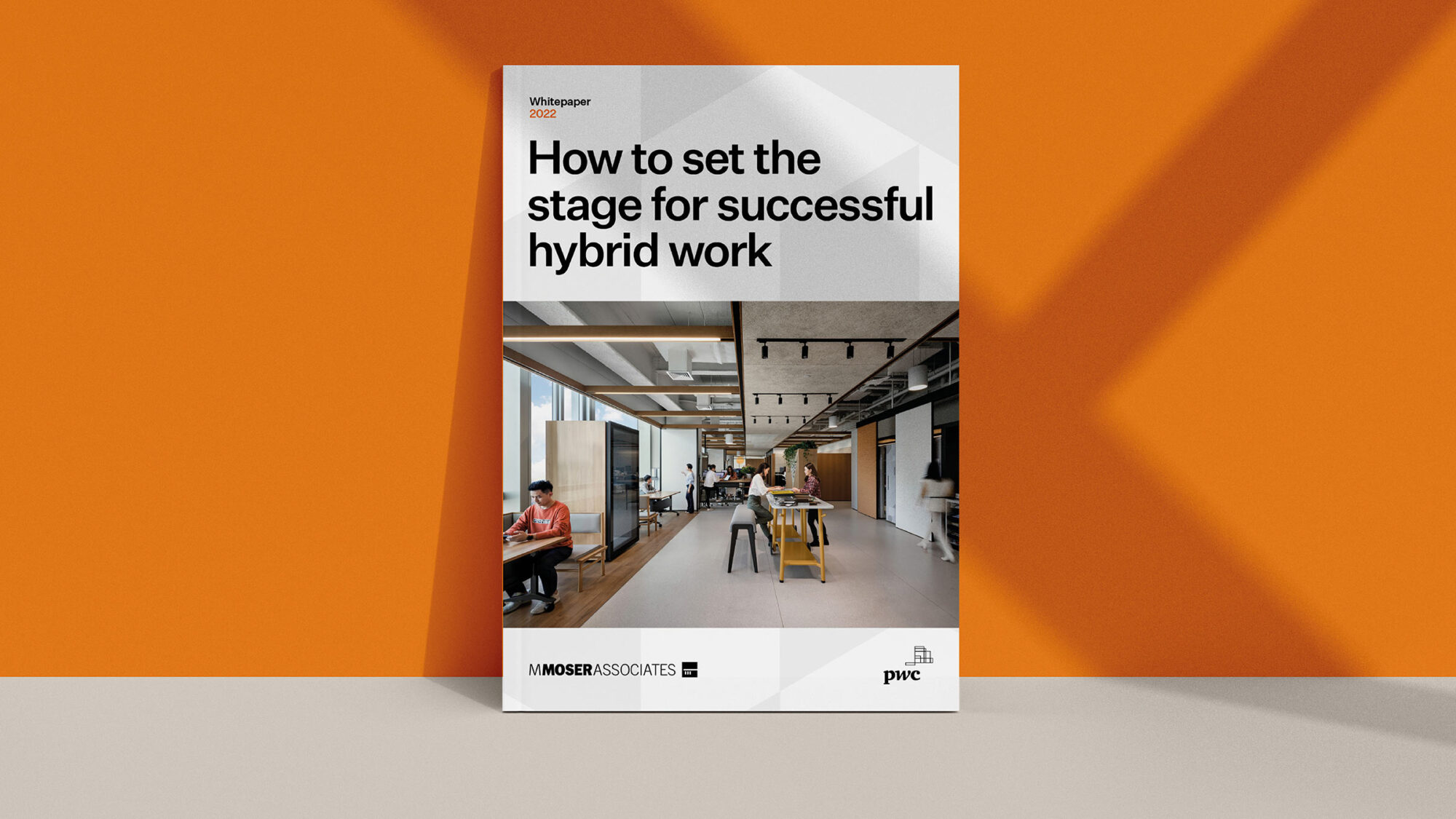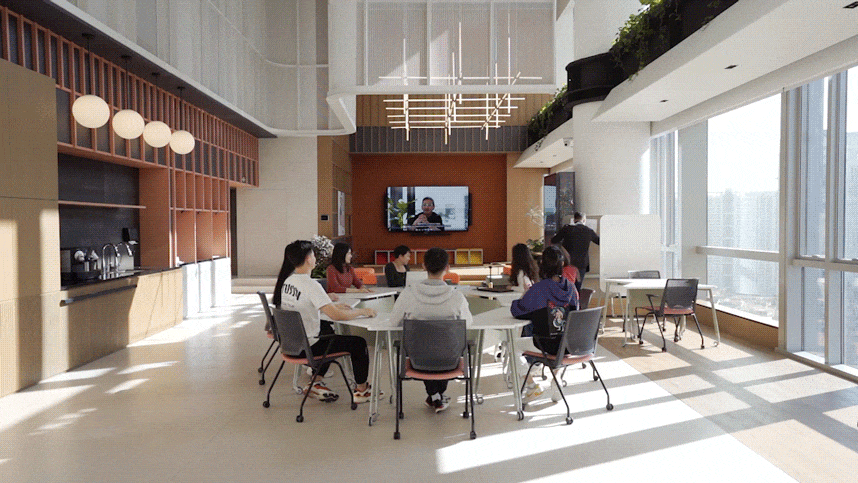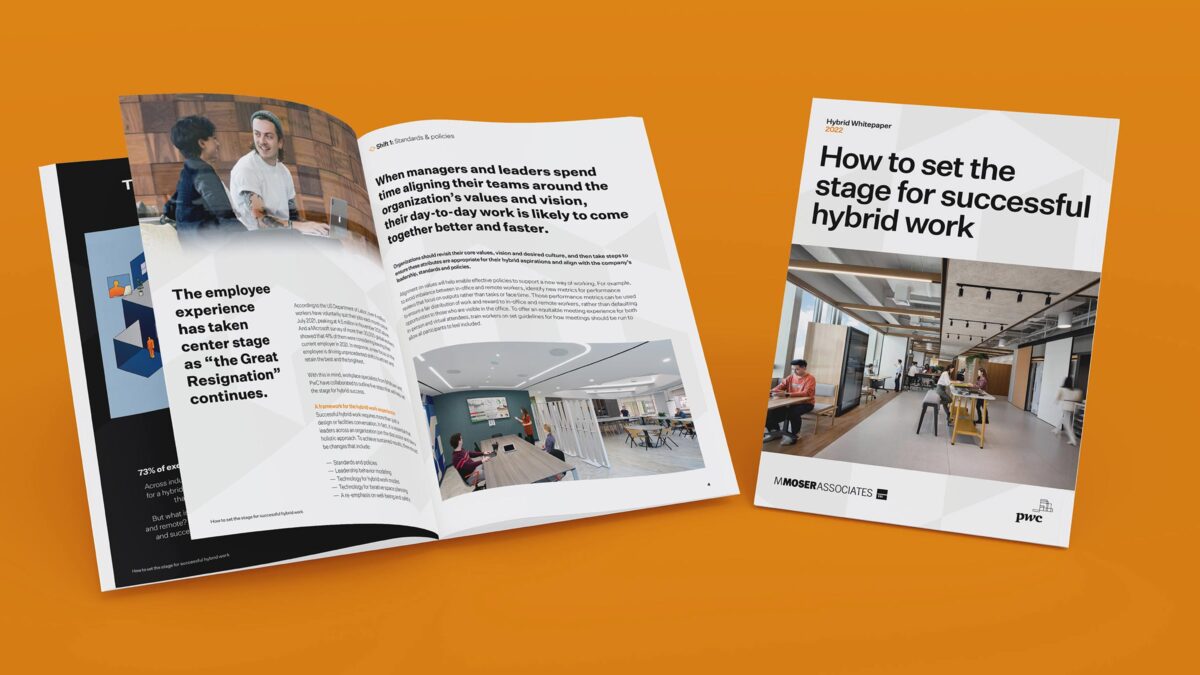










Our latest whitepaper examines the question “how do we transition to hybrid work?”.
Many organisations are transforming their real-estate strategies in response to shifting demands. Moreover, those embracing adaptable workplace solutions now enjoy a new kind of agility.
Inside, M Moser and PwC discuss steps that will set the stage for success.

Put simply, hybrid work is a flexible model which allows people to work from a variety of locations.
The hybrid model isn’t new. In fact, the current shift towards flexibility grew for a decade before its recent breakout.
Of course, there are many factors to consider when moving to hybrid work. It can be challenging for employers to adapt to these new expectations, but the change also brings opportunities.
In the whitepaper, we discuss how a holistic approach will make your transition more successful. In addition, we cover five key topics that you need to consider:
Wherever you are in your hybrid transition, our 40 years of workplace experience will help take you to the next level. Recently, we developed a range of services to support our clients. However, there’s no single solution that works for everyone.
To begin with, many approach us with questions. These include:
In one hybrid space we created, staff spend 2-3 days in the office, and the rest working from home.
Due to this change in occupancy, we reduced square footage per headcount to 78 sq ft. In turn, this provided significant savings on rent compared to an average of 176 sq ft.
The space now operates a 1:2 occupancy ratio. As a result, we increased collaborative spaces by 150%, focusing people’s office time on interaction.
Even with a 53% smaller footprint, the space is future proof. When the team expands, it’s ready to support up to 15% headcount growth.

Group Director
Associate Director, Workplace Strategy and Transformation
Director, Workplace Strategy